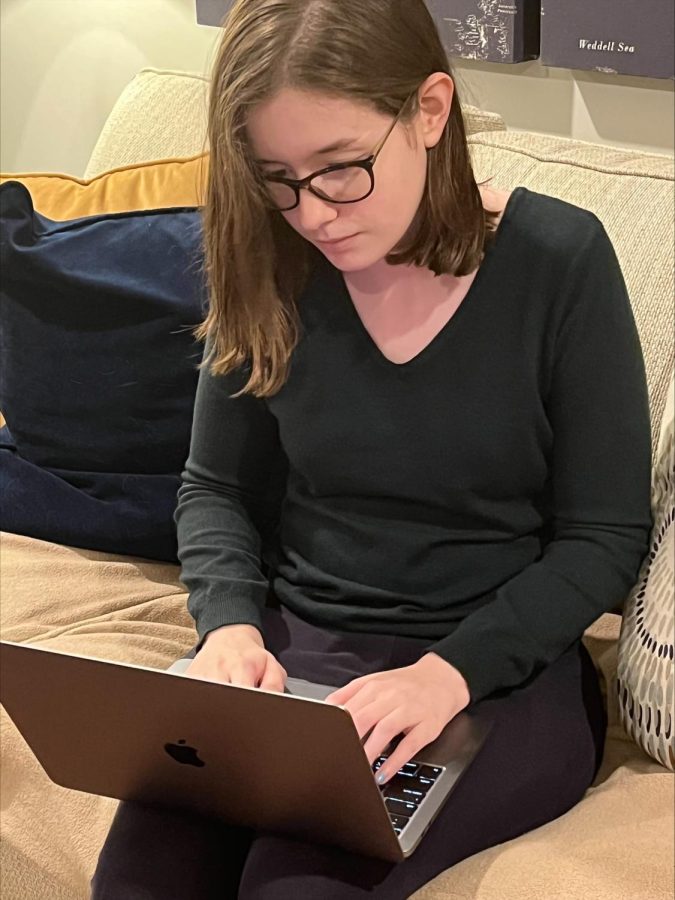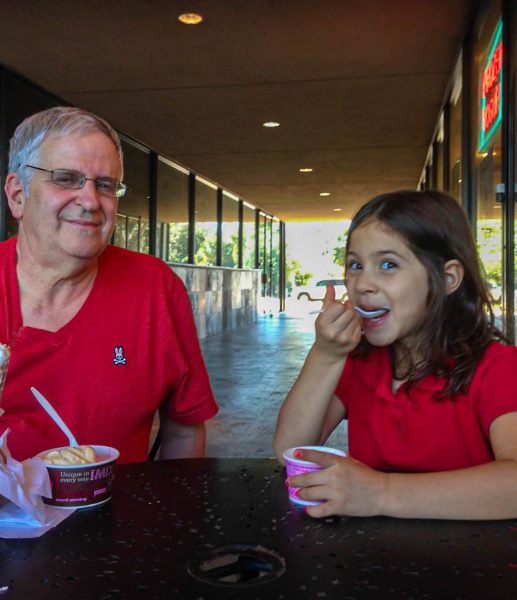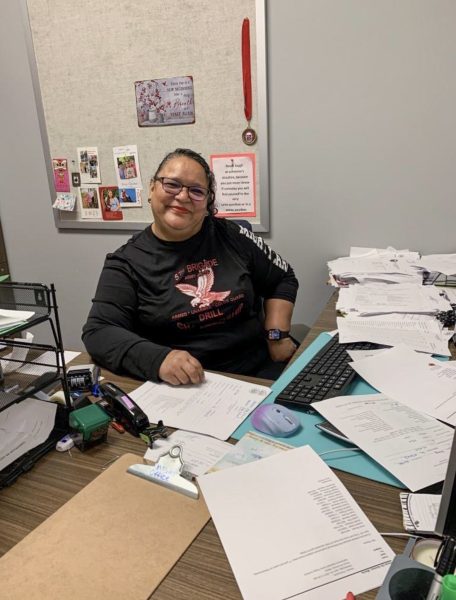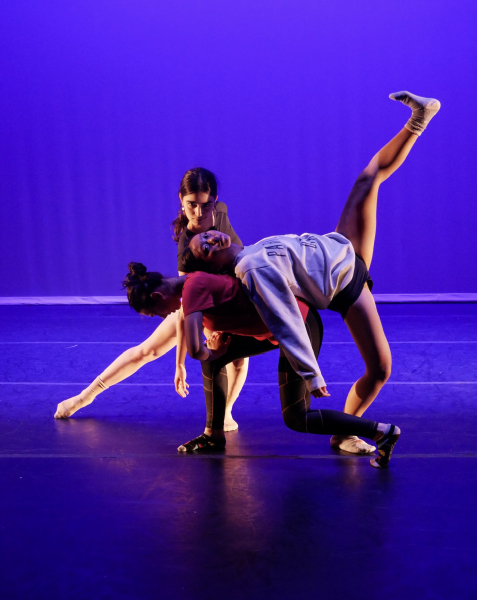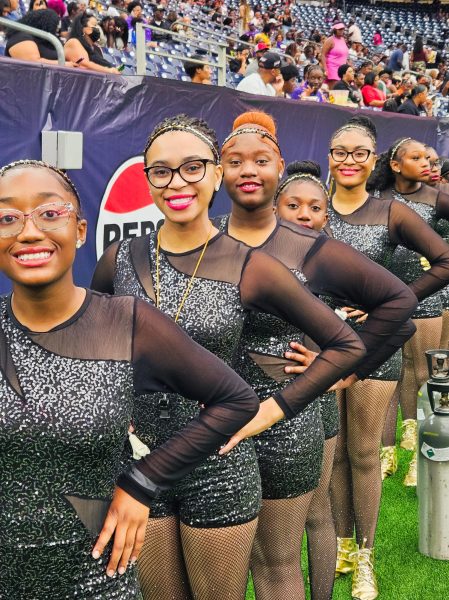50,000 words in 30 days: Looking back on NaNoWriMo
Image provided by Bailey Sutton
Junior Bailey Sutton works on her NaNoWriMo novel. She did most of her writing in her room during Thanksgiving Break.
This year, Sutton was determined to complete NaNoWriMo. The goal: 50,000 words in 30 days. For reference, that’s a word count a little less than The Great Gatsby, but a little more than The Giver.
“I attempted it my freshman year of high school,” junior Bailey Sutton said. “I did very badly and failed about 1,000 words in.”
To achieve her goal, Sutton committed herself to an intense writing schedule.
“It’s encouraged to write about 1,600 words a day,” Sutton said. “And there’s some ways you can alter it. If you only want to write on the weekends, I think the estimate was about 12,000 words a day.”
NaNoWriMo stands for “National Novel Writing Month.” Started in 1999, NaNoWriMo is a nonprofit organization that promotes writing fluency and education. For 2021’s challenge, NaNoWriMo boasts 798,162 active novelists and 367,913 completed novels.
However, NaNoWriMo is more than just a word count.
“If I’m being realistic, I’m probably not going to be able to finish the whole thing,” junior Taryn Morris admitted. “But for me, the point of NaNoWriMo isn’t necessarily to get all the words done — it’s to try and write something everyday. Try and make that one step forward. Keep going, and at least at the end of the month have a finished story ready. It’s a way to develop writing skills in sort of a fun way and actually have that spark, that reason to continue a project you’ve been meaning to try.”
For the WRITE club, this has become more of a yearly social event than a heated challenge.
“The club as a whole has formed a group,” Morris said. “A NaNoWriMo group is where we’re able to see each other’s profiles,chat and basically encourage one another. It’s just fun. Bailey and I have read over each other’s stories and given opinions and encouraged each other which has been fun.”
Beyond the club, NaNoWriMo introduces individual creators to a greater community made up of writers of all ages.
“It connects writers all over the world,” Sutton said. “It is an international event. I think it’s great for writers to find that support because it’s really helpful to have peer reviews, critics or just people to chat to and bounce ideas off of. It really connects people.”
Individually, Sutton and Morris are both working on novels. For Sutton, her NaNoWriMo project is just the beginning of a bigger creation.
“In the future, I do want to publish work, possibly in college,”Sutton said. “Get some royalties, have some pocket money for food and stuff. Eventually, I want to make spin-off novels from the stories.”
NaNoWriMo gave Sutton the motivation she needed to get started.
“Mainly, I think it’s a great encouragement for writers, especially if they struggle with writing consistently,” Sutton said. “I know that’s something that I struggle with is being able to write on a day-to-day basis, so I think it really challenges writers to say,‘Okay, I don’t have time to mess around, I have to write it now.’”
Morris used NaNoWriMo as an opportunity to learn about herself as a writer. She realized that she needed to make the transition from focusing on the plot to developing the characters’ voices.
“That’s what makes books unique,” Morris said. “They are one of the only moments where the narrator is actually telling you what’s going on through their head. If you just have them as a list of information, that’s not how real people think, and it’s not very entertaining to read either. So about halfway through, I looked through my writing notes said, ‘Oh shoot, this is not really a character; this is just an exposition deliverer.’”
One thing both of them realized was scheduling does not work.
“I fell off the schedule very much,” Sutton said. “I was only able to get about 100 words a day for a little bit, just because I got towards the end of the cycle, and it became especially difficult to try and keep up that 1000 word goal. My brain was fried from school, so over Thanksgiving break I relaxed and did what I could when I had time.”
Morris and Sutton learned that words cannot be forced.
“Some days you could only get 300 words down, and that was that,” Morris said. “There’s not much else you can do. It’s better to think about it and not try and force it, because with the words that I tried to force, I almost always ended up deleting later because I didn’t like them.”
In the end, Morris wrote 16,000 words and Sutton wrote 7,000. Even though they didn’t complete the challenge, they don’t feel like they failed.
“I only made it to about 16,000 words, which is much less than I would’ve liked,” Morris said. “But I did end up with a story I was happy with. I realized some things about my writing and the stories I want to tell that I definitely will use in future projects.”
This year’s NaNoWriMo didn’t discourage Morris or Sutton — it inspired them. Both are eagerly looking forward to next year’s challenge.
“It’s probably one of my favorite events that happens yearly,” Sutton said. “It’s one that I can participate in, so I will definitely try to do it again next year.”
Maybe that’s because these writers see value in Nanowrimo behind just completing the goal.
“I may not make any progress at all next year,” Morris said. “But just the challenge itself is really fun. The only way to get better is to keep practicing.”
Your donation will support the student journalists of Bellaire High School. Your contribution will allow us to purchase equipment and cover our annual website hosting costs.


